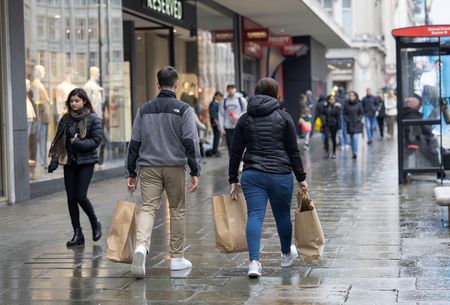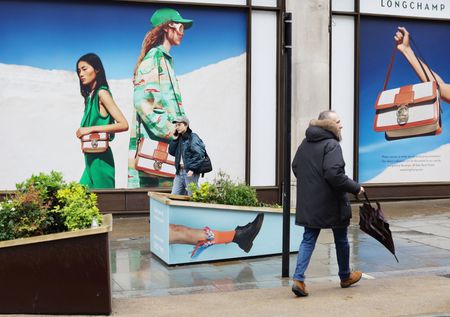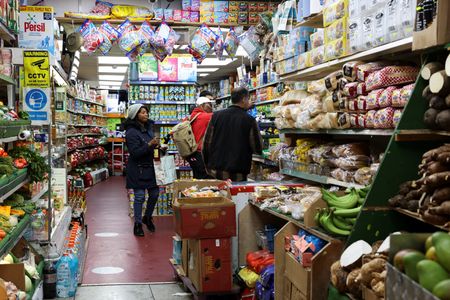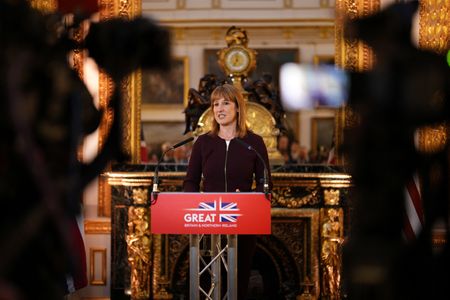By Andy Bruce and William Schomberg
LONDON (Reuters) -British shoppers unexpectedly loosened their purse-strings last month, official data showed on Friday, defying most forecasts from analysts who had predicted a fall in sales volumes against a backdrop of weak overall growth in the economy.
Sales volumes increased by a monthly 1.0%, driven by non-food sales, although supermarkets saw a drop after a surge in business in January, the Office for National Statistics said.
A Reuters poll of economists had pointed to a monthly fall of 0.4% in sales volumes. The ONS revised January’s month-on-month increase to 1.4% from an initial 1.7%.
Compared with a year earlier, sales volumes in February were 2.2% higher versus economists’ expectations for a slowdown to 0.5% growth.
While retail sales are volatile, the readings are likely to cheer finance minister Rachel Reeves, whose ambitions to kick-start the economy have been dogged by weak growth data since she took office last July.
“February’s strength was broad-based, with all major categories except food store sales up. All this bodes better than hoped for Q1 GDP growth,” Investec economist Sandra Horsfield said.
Household goods stores registered their largest rise in sales since April 2021 and the volume of clothing sales also picked up due to widespread discounting, the ONS said.
Separate ONS data showed British households saved more money as a proportion of their income at the end of 2024 than at any point in nearly 15 years, apart from during the COVID pandemic.
The household savings ratio rose to 12.0% in the fourth quarter of 2024, up from 10.3% in the third quarter.
That bank of savings – and the possibility it could be unlocked – is one reason why some economists think tepid economic growth can pick up later in the year.
The ONS on Friday confirmed the economy expanded by 0.1% in the fourth quarter, although it revised up output for 2024 as a whole to 1.1% from 0.9% thanks to upward revisions to growth in the first half of the year. Still, gross domestic product per head was flat.
Household disposable income adjusted for inflation rose 4.3% in annual terms in the fourth quarter – the biggest such increase in nine years, reflecting rapid wage growth despite a sluggish broader economy.
Thomas Pugh, an economist at accountants RSM, said the retail sales data could be a tentative sign that broader measures of household spending would pick up in early 2025.
Retail sales volumes for the three months to February rose by 0.3%, the first increase by that measure since the three months to November.
“But consumers are clearly still nervous and without a material increase in consumer confidence aren’t likely to go on a spending binge,” Pugh said.
How the economy fares after the imposition of tax hikes on employers, higher regulated energy bills and a raised minimum wage – all taking place next month – is a key question for policymakers.
“Food inflation remains high, meaning consumers are buying less, and retailers will be feeling cautious in the build-up to changes to wage costs next week,” said Oliver Vernon-Harcourt, head of retail at Deloitte.
This week, clothing retailer Next raised its profit outlook after better than expected trading. But home improvement retailer Kingfisher said consumer sentiment had been dented by measures in the government’s budget last October.
The ONS said the total volume of retail sales still remained fractionally below its pre-pandemic level.
(Additional reporting by James Davey. Editing by Mark Potter)











